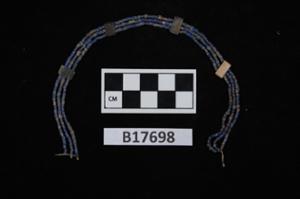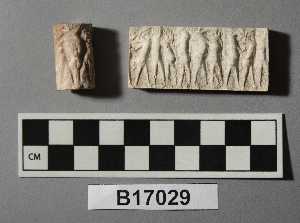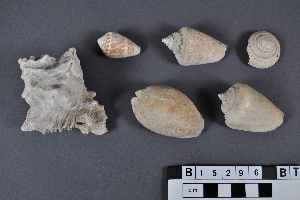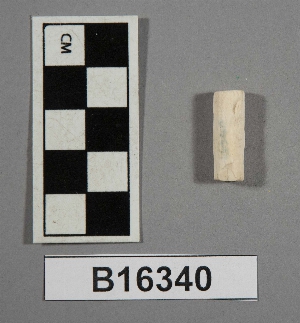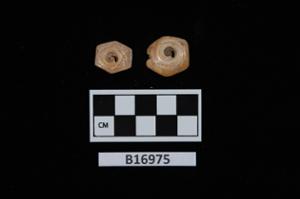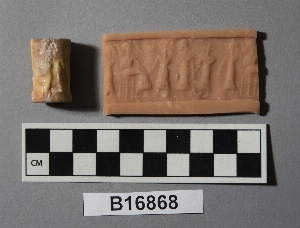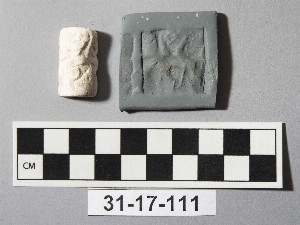Ur, Iraq
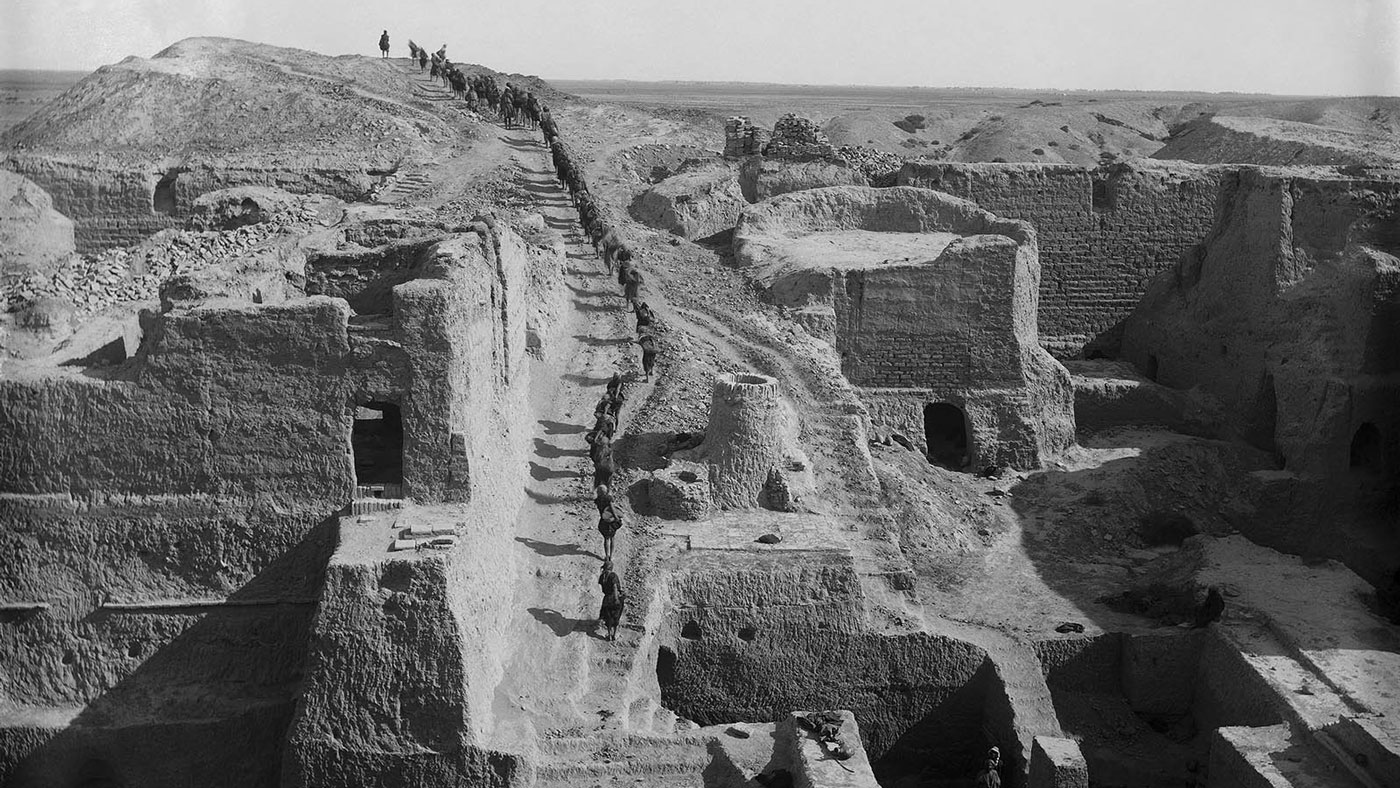
Located in southern Iraq, near the former northern limits of the Persian Gulf, Ur was one of the most famous archaeological excavations—along with Tutankhamun’s tomb in Egypt—during the early 20th century. Frequently described in the popular press, the work at Ur brought the magic of archaeology to life, particularly by tying the discoveries into familiar biblical stories. Between 1922 and 1934, the Joint Expedition of the British Museum and the Penn Museum was directed by C. Leonard Woolley and uncovered some of the most well-known and celebrated art from ancient Mesopotamia. These finds were divided between the two partner institutions (25% each) and the Baghdad Museum in Iraq (50%).
- Object[230]
- yes[230]
- near eastern[230]
- amulet[24]
- bead[40]
- beads[15]
- belt bead[2]
- bracelet[1]
- bull head[1]
- comb (hair - grooming tool)[1]
- cosmetic box lid[1]
- cosmetic shell[9]
- cylinder seal[42]
- cylinder seal fragment[3]
- furniture fragment[2]
- game piece[12]
- gameboard[1]
- hair comb[1]
- handle[2]
- inlay[34]
- knife handle[1]
- lamp[2]
- lyre[1]
- lyre fragment[2]
- necklace[1]
- object[1]
- ornament[11]
- pendant[3]
- pigment[1]
- plaque[1]
- pommel[1]
- pouring vessel[2]
- raw material[3]
- ring[1]
- scepter[1]
- spatula[1]
- stamp seal[2]
- statuette[2]
- string of beads[12]
- token[1]
- wreath[1]
- agade[2]
- akkadian[1]
- archaic iv[1]
- assyrian[4]
- early dynastic iii[9]
- early dynastic iiib[3]
- isin larsa[1]
- isin-larsa[1]
- jemdet nasr[9]
- kassite[4]
- minor dynasty[7]
- neo-babylonian[2]
- persian period[1]
- ur iii[1]
- 3 metres down, p.g.[1]
- diqdiqqeh[1]
- g. 56 n.h. 2[1]
- p.f.t. d 4. - 1.50m[1]
- p.f.t. d 6 - 530[1]
- p.f.t. d 6. - 530[1]
- p7j. p7g./j6[1]
- p7j. p7g/j6[1]
- pd. foundation deposit.[1]
- pft - 900[1]
- pft, d 4 - 1050[1]
- pft, pfg /h[1]
- pft, pfg/e[1]
- pft, pfg/h[4]
- pft. pfg./h[1]
- pft. pfg/h[1]
- pft. pfg/m[1]
- pg 1237/67[1]
- pg 1237/8[1]
- pg 1310[1]
- pg 1332[1]
- pg 1600[1]
- pg 1702[1]
- pg 1720[1]
- pg 1815[2]
- pg 1845 - found below burial k[1]
- altar[1]
- animal[4]
- animal head?[2]
- animal?[1]
- animals[3]
- antelope[3]
- bird[4]
- bird head?[1]
- bird?[1]
- boat[1]
- boatman[1]
- bull[7]
- bull head[2]
- crescent[1]
- deer[1]
- demon[1]
- demon face[2]
- dog?[1]
- dots[1]
- dragon?[1]
- eabani[2]
- eagle[5]
- enkidu[1]
- eye[2]
- eyes[1]
- face?[1]
- female head[1]
- fist[2]
- flower?[1]
- frog[2]
- frog?[1]
- gateway[1]
- gazelle[1]
- geometric pattern[3]
- gilgamesh[3]
- gilgamesh?[1]
- goat[2]
- god[1]
- goddess[1]
- human face[1]
- human face?[1]
- hunter[3]
- ibex[2]
- inscription[1]
- introduction scene[1]
- lance[1]
- lion[12]
- lion head[1]
- lion?[1]
- man[3]
- net[1]
- ningal[1]
- noah?[1]
- ostrich[1]
- owl?[1]
- palmette[3]
- pazuzu[1]
- petal[1]
- rooster[1]
- scorpion[1]
- seated god[4]
- seated goddess?[1]
- shell[1]
- star[1]
- tree[1]
- uraeus[1]
- worshipper[3]
- worshippers[2]
- agate[5]
- alabaster[2]
- amethyst[1]
- beryl[4]
- bitumen[2]
- bone[6]
- bronze[2]
- calcite[3]
- carnelian[21]
- copper[3]
- diorite[1]
- egyptian blue[2]
- faience[6]
- frit[4]
- garnet[1]
- glass[4]
- gold[7]
- green jasper[1]
- hematite[4]
- ivory[3]
- jasper[1]
- lapis lazuli[32]
- limestone[11]
- marble (stone)[1]
- mother-of-pearl[1]
- paste[8]
- pigment[10]
- porphyry[1]
- quartz[3]
- red jasper[1]
- shale[1]
- shell[230]
- silver[5]
- steatite[4]
- stone[15]
- terracotta[2]
- turquoise[1]
- actual citation[32]
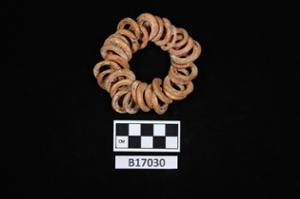
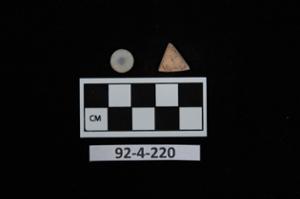

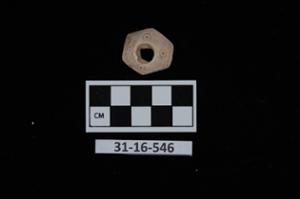
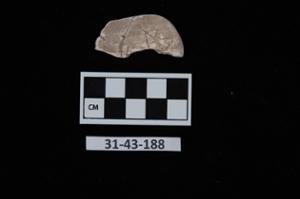

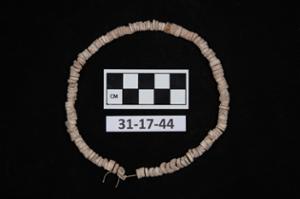
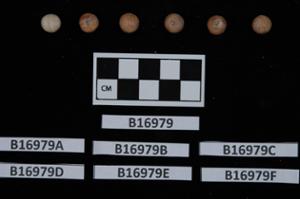
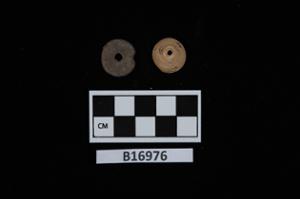
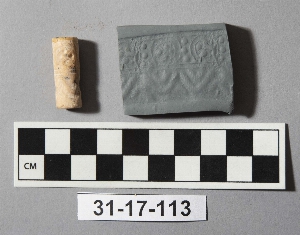

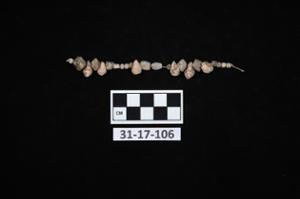
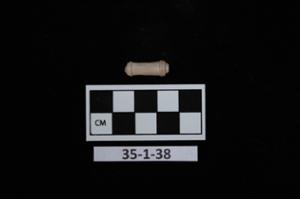
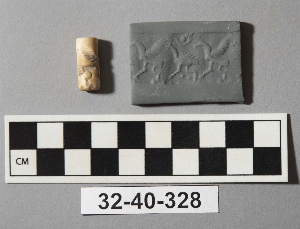
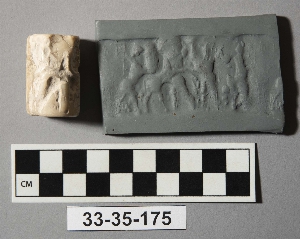
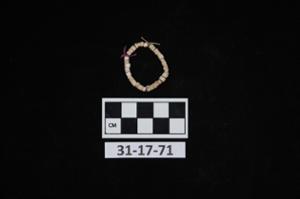
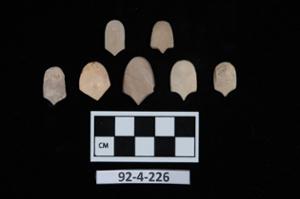
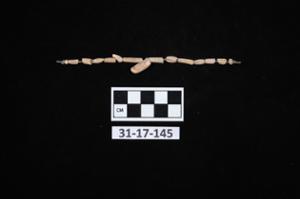

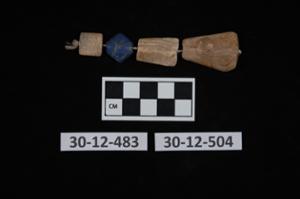
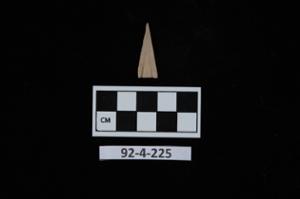
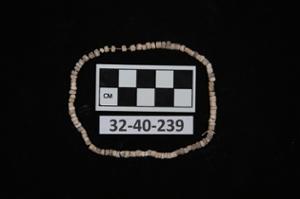
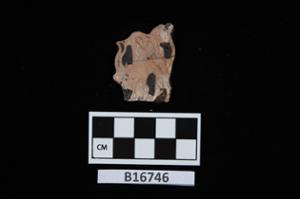
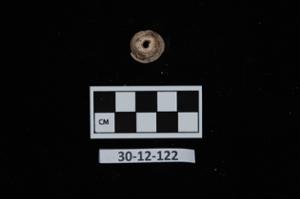
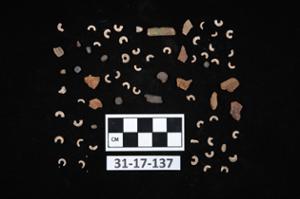
1 - 30 of 230 Records


